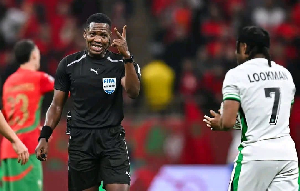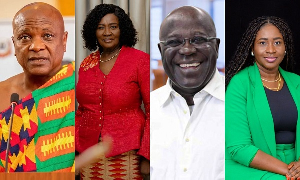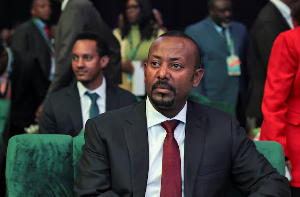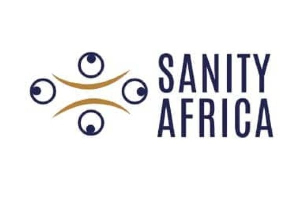Accra, Aug. 21, GNA - The Ghana Water Company Limited (GWCL) said on Friday that it needed $1.6 billion capital investment to revamp the water production system to meet government's 85 per cent coverage target by 2015.
The United Nations Millennium Development Goal (MDG) set a global target of 75 per cent coverage of potable water by 2015, but Ghana raised the bar to 85 per cent. Mr. Ebenezer Garbrah, Director of Planning and Development at GWCL said so far 59 per cent coverage had been achieved, but there was the need for a heavy capital investment of at least $1.6 billion over the next six years, if the set target was to be met. He made the remarks at a day's interactive forum between the management of Aqua Vitens Rand Limited (AVRL), GWCL and the heads of member-organisations of the Coalitions of NGOs in Water and Sanitation (CONIWAS).
The forum, organised by AVRL, was to explain to the members of CONIWAS, the policy position of AVRL, its mandate in the water sector, in regard to the much-criticised five-year Management Contract, the role of GWCL as grantors and the general state of affairs of the sector, since AVRL took over as operators. It was also aimed at giving members of CONIWAS a tour of the facilities of AVRL, including the Geographical Identification System (GIS) Department, Meter Workshop and the 24-hour toll-free Customer Care Call Centre.
Mr. Garbrah noted that the AVRL was brought on board the water sector as part of the World Bank's grant package, essentially, to improve the efficiency level of the sector to make it investor attractive.
He said even though no specific baseline figures were put in place to measure the performance of AVRL, three years into the contract, the operator had managed to improve revenue collection, widen the distribution network, put measures in place to rope in illegal and evasive consumers into the metering and billing system, and also improve on the attitude to work and output of workers. Mr. Garbrah said the two major problems of GWCL were governance and a sustainable capital investment, saying that AVRL had helped to deal with the governance problem to a large extent, but the finance side was still lacking.
"Now it is up to the government to make huge capital investment into the expansion of the water production system for the country to optimise the benefits of the improved efficiencies AVRL had brought to bear on the sector," he said. He noted that government investment into the water sector had not been encouraging over the years, saying that whereas private investment could be generated on the back of the improved efficiency chalked under AVRL government had to make it a point to generate substantial domestic funds to support the sector.
Mr. Garbrah recommended that as a first step, government could increase the talk tax by about five per cent and also encourage producers of water-based alcoholic beverages like beer, stout and others to increase prices by at least one Ghana cedi so that money could be mopped up to support the sector.
"We proposed the water tax in 2001 to raise money specifically for the water sector, but the model we proposed is now being used for the talk tax but the funds from that facility is not benefiting the water sector much," he said.
He said it was time for government to implement economic tariffs for water, adding that, on the back of the improved efficiencies under AVRL, characterised mainly by the GIS, which is used for locating all customers, among other things, GWCL would impress upon the Public Utilities Regulation Commission to grant economic tariffs on water.
Mr. Garbrah said AVRL's contribution so far, under the five-year management contract, had also set the tone for GWCL to package good investment plan for a road show to attract private investors. Mr. Andy Barber, Managing Director of AVRL said with the remaining two years of AVRL's contract, $270 million was needed to optimise the existing water production system to sustain the gains made so far. "To meet the 85 per cent set target by 2015, heavy capital investment needs to be put into building more treatment plants, providing large scale electronic meters to measure how much water is produced and how much is sold among other things," he said. He pointed out that by the terms of the management contract; the heavy capital investment was in the purview of GWCL and not AVRL, saying "we only manage what GWCL gives to us". Mr. Barber said currently some of the heavy duty electronic meters had been procured and would be installed soon to be able to measure the production levels and sales levels with much more precision.
Mr. Patrick Apoya, Executive Secretary of CONIWAS admitted that the interactive forum had been an eye opener for CONIWAS members on the real mandate and indeed, the achievement and challenges of AVRL. He lent his support to the call for the water tax, saying that no donor would come and give free money to Ghana if government did not show commitment to generating domestic funds to support the water sector. Mr. Apoya expressed worry that 2.5 per cent extra was placed on the Value Added Tax to support the National Health Insurance Scheme (NHIS), even though people need not access the scheme every day to live, like they need water every day to survive.
"We only need the NHIS when we are already ill, but we need water every day to prevent sickness, and yet government sees more wisdom in creating a special tax regime to support a health insurance scheme than for providing potable water," he said.
Mr. Rudolf Amenga-Etego, Executive Director of Foundation for Grassroots Initiatives in Africa told the Ghana News Agency that water was a basic need for Ghanaians and should therefore draw its support from the consolidated fund.
"The state and the government must make it a point to generate domestic funds to support the water sector," he said. Mr. Amenga-Etego said the interaction with AVRL had opened his eyes to the reality that indeed corporate entity was not a profit-making venture.
General News of Friday, 21 August 2009
Source: GNA












